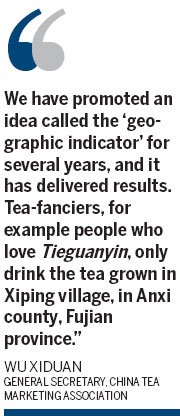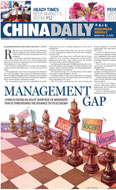Economy
Nice brews come at a cost
Updated: 2011-03-28 09:55
By Ben Yue (China Daily)
Business people promoting Taiwan-grown tea products to Beijing customers at Maliandao Tea Street, the biggest tea-trade hub in southern Beijing. According to tea experts at Maliandao, 2011 is a good year for tea after unusually cold weather in southern China lengthened the tea-growing period, enabling leaves to store more nutrition and, therefore, pushing prices higher than last year. [Photo / China Daily]
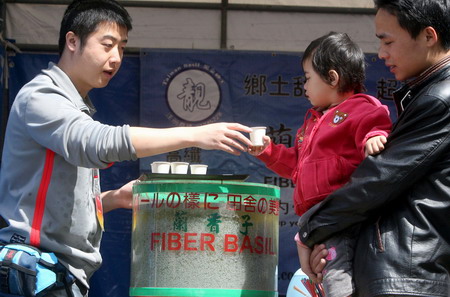
Spring tea prices steaming thanks to lengthy cold season, shortages
BEIJING - A top tea expert says the average price of this year's spring tea will be up 15 percent because of a high demand-supply ratio, a lengthy cold season and soaring labor costs.
Wu Xiduan, general secretary of the China Tea Marketing Association (CTMA), the country's semi-official organization set up to promote tea, said because this year has been unusually cold, tea plants matured later and output was reduced. Many plantations in the growing area hired fewer experienced tea-pickers because their wages have doubled. Thanks to higher farm-gate prices, the wider market is anticipating a substantial rise.
|
|
According to CTMA statistics, top quality Longjing tea picked before the Tomb Sweeping Festival, which is on April 5 this year, could hit 12,000 yuan ($1,828) to 14,000 yuan a kilogram at the plantations in several nationally famous villages around the Hangzhou suburbs, such as Meijiawu and Shifengshan.
He said China's demand for high quality tea is increasing fast at 10 percent year-on-year. He believes the tea market will take a leaf out of the book of wineries, carefully marketing different types of tea and the terrain in which they were grown.
This year, a Hangzhou-based tea company, Hangzhou Longjing Tea Group, is selling its Meijiawu-grown Longjing as a futures financial product, known as a tea primeur, at cost of 30,000 yuan for a 500-gram presentation box. Chinese businessmen bought the entire crop before it was picked.
According to tea traders in Maliandao Tea Street, the largest tea-trade hub in southern Beijing, 2011 is considered a very good year for tea because the unusually cold weather in southern China lengthened the growing season, enabling the plants to store more nutrition and creating shorter, more attractive leaves.
"We have promoted an idea called the 'geographic indicator' for several years, and it has delivered results," said Wu. "Tea-fanciers, for example people who love Tieguanyin (a kind of oolong tea), only drink the tea grown in Xiping village, in Anxi county, Fujian province."
Wu said there is an enormous variety of Chinese tea, each with its own character, making it difficult to apply a universal standard. However, CTMA is embarking on the process with some teas where it feels it can - for example with the more uniform puer tea.
| ||||
"I think the fast change in the market favorites helps to promote China's tea industry," Wu said. It enables the public to learn more about different kinds of tea.
CTMA said that China produced 1.4 million tons of tea last year. One million was sold in China, 300,000 tons were exported and the remaining 100,000 tons were made into products such as bottled-tea soft drinks.
Compared with exports, the local market is huge. Wu believes exports will remain stable over the next few years, although revenues might fluctuate according to currency movements.
There have been concerns that The Cross-Straits Economic Cooperation Framework Agreement, under which tea from the island province of Taiwan can be imported free of tax, might affect the mainland market. Wu said the impact will not be very large because the production of tea is limited in Taiwan and most of it is sold locally.
E-paper

Rise and shine
The Chinese solar energy industry is heating up following recent setbacks in the nuclear sector
Bombs aim for regime change
CSI, with a twist
Literary path
Specials
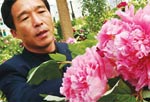
Peony express
Growers of china's unofficial national flower are reaching out to europe for help

Tea-ing up
More turning to Chinese tea for investment opportunities like vintage wine
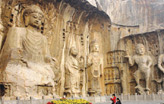
A cut above
The ancient city of Luoyang is home to a treasure trove of cultural wonders.
